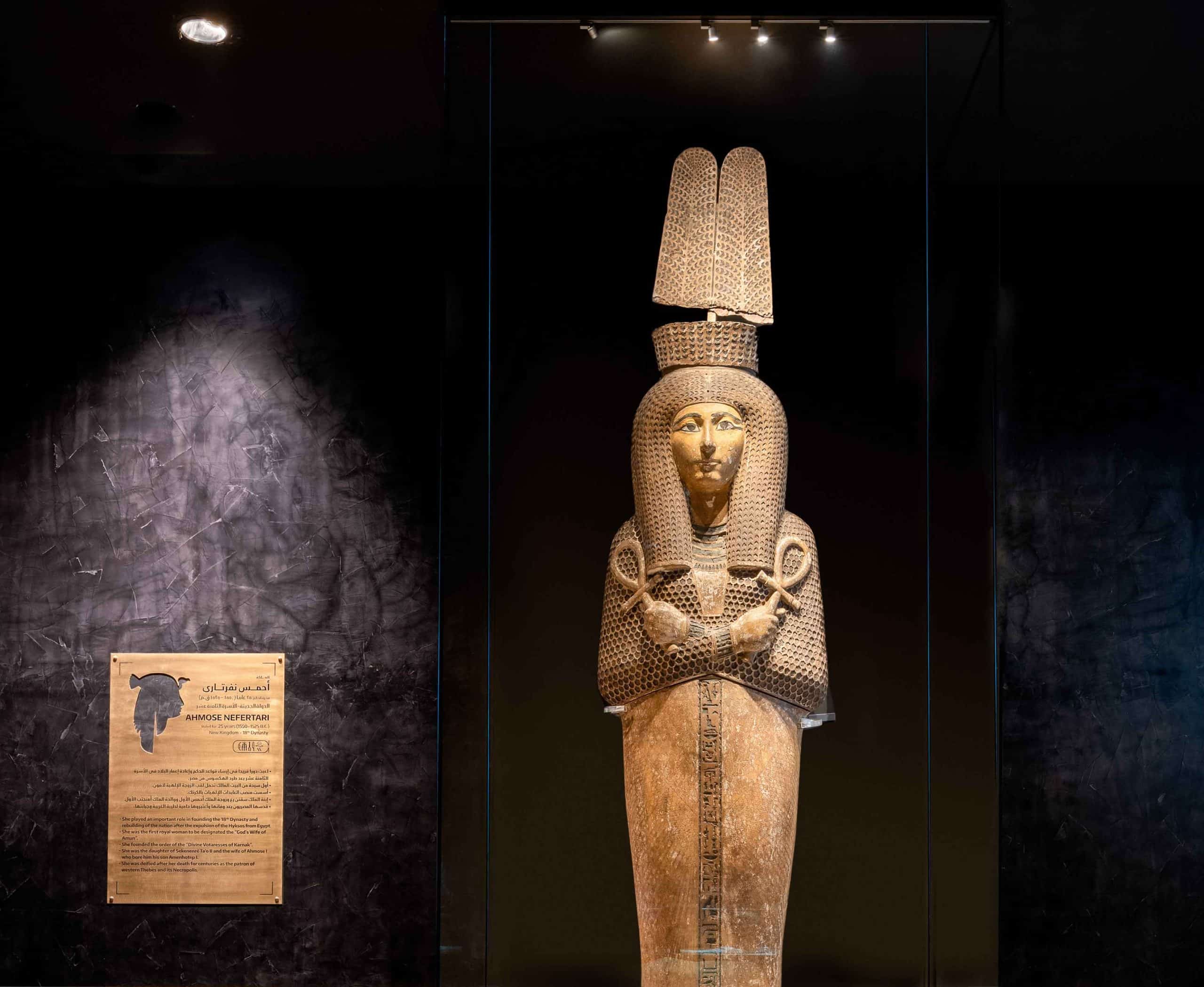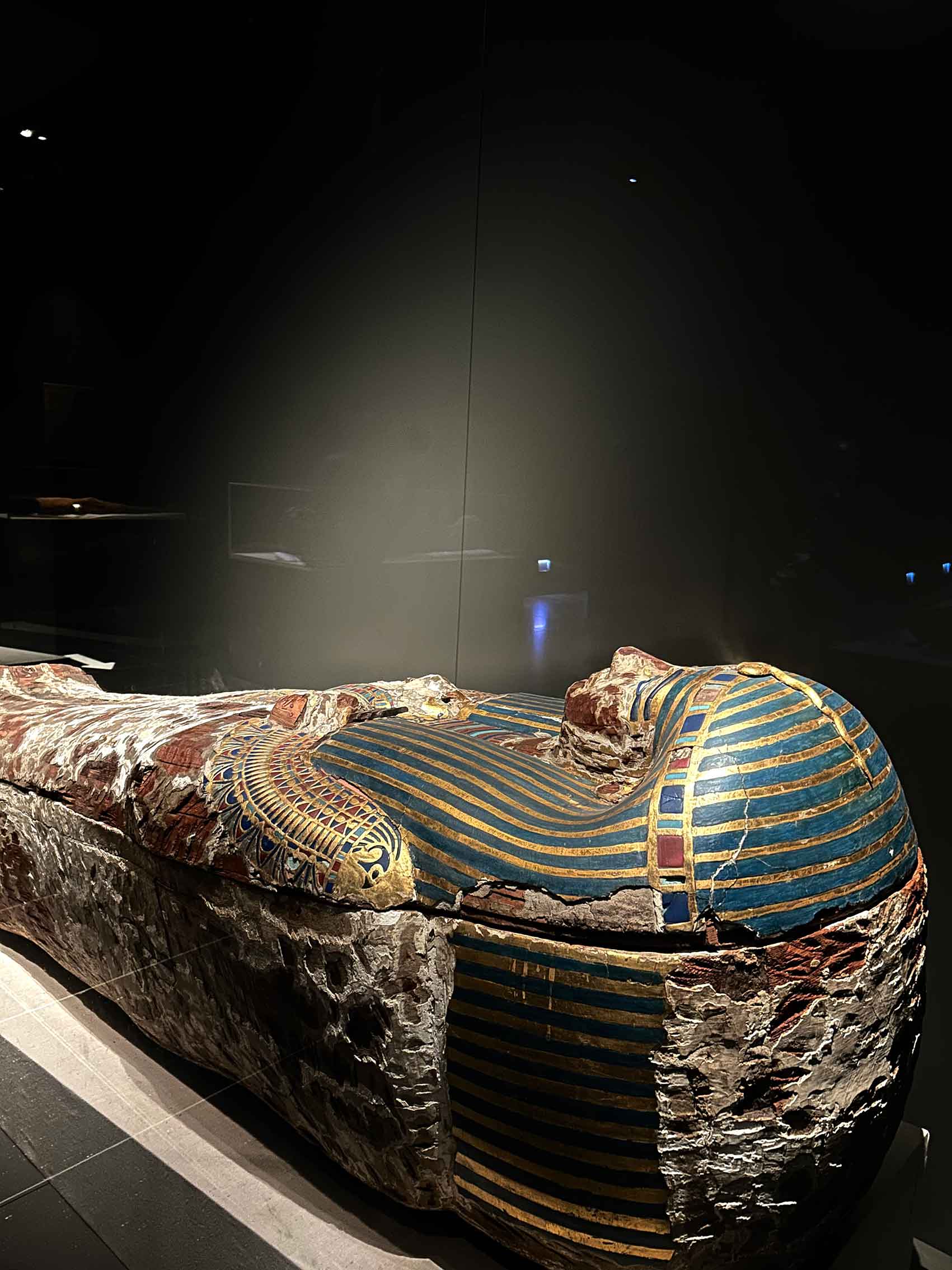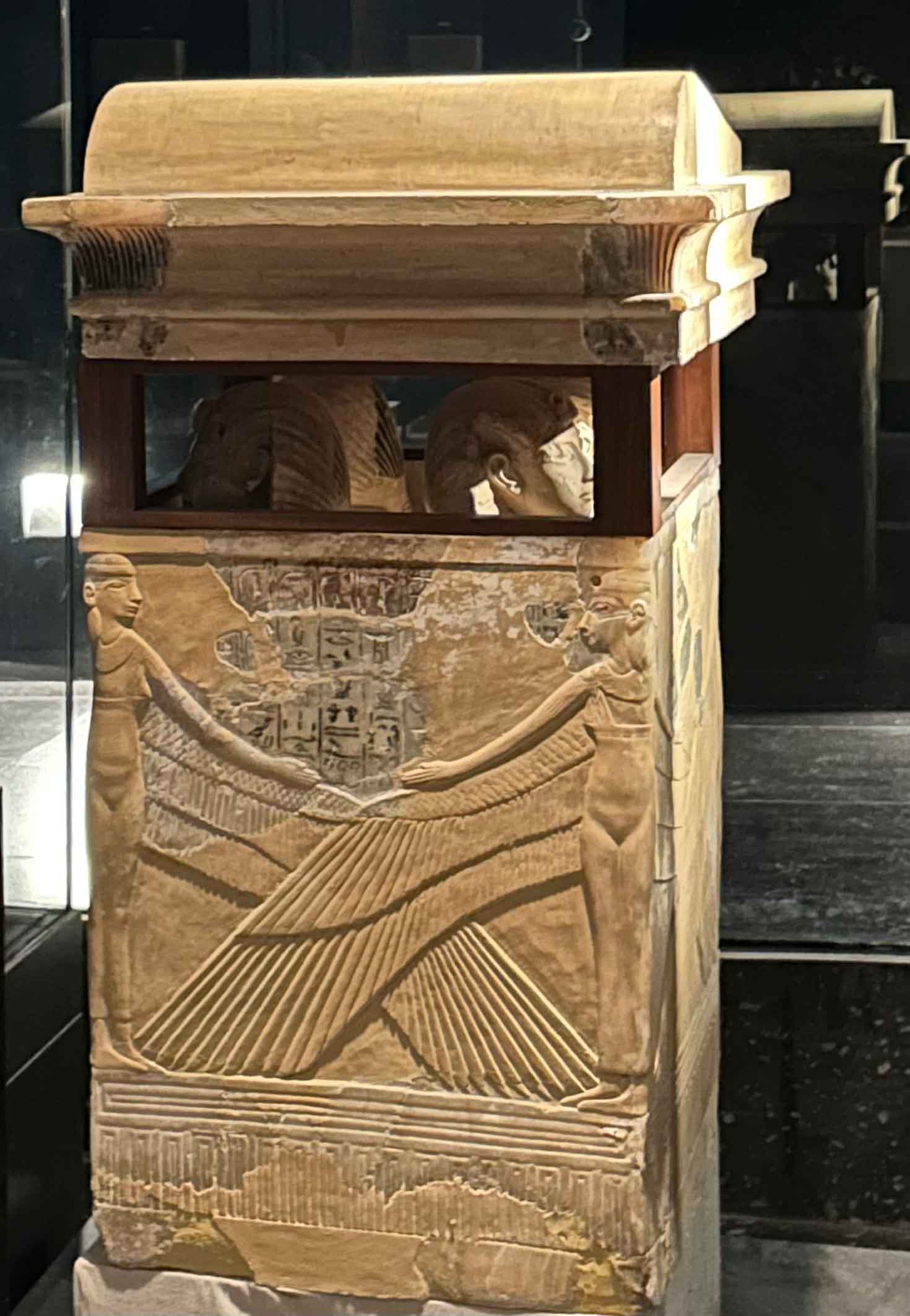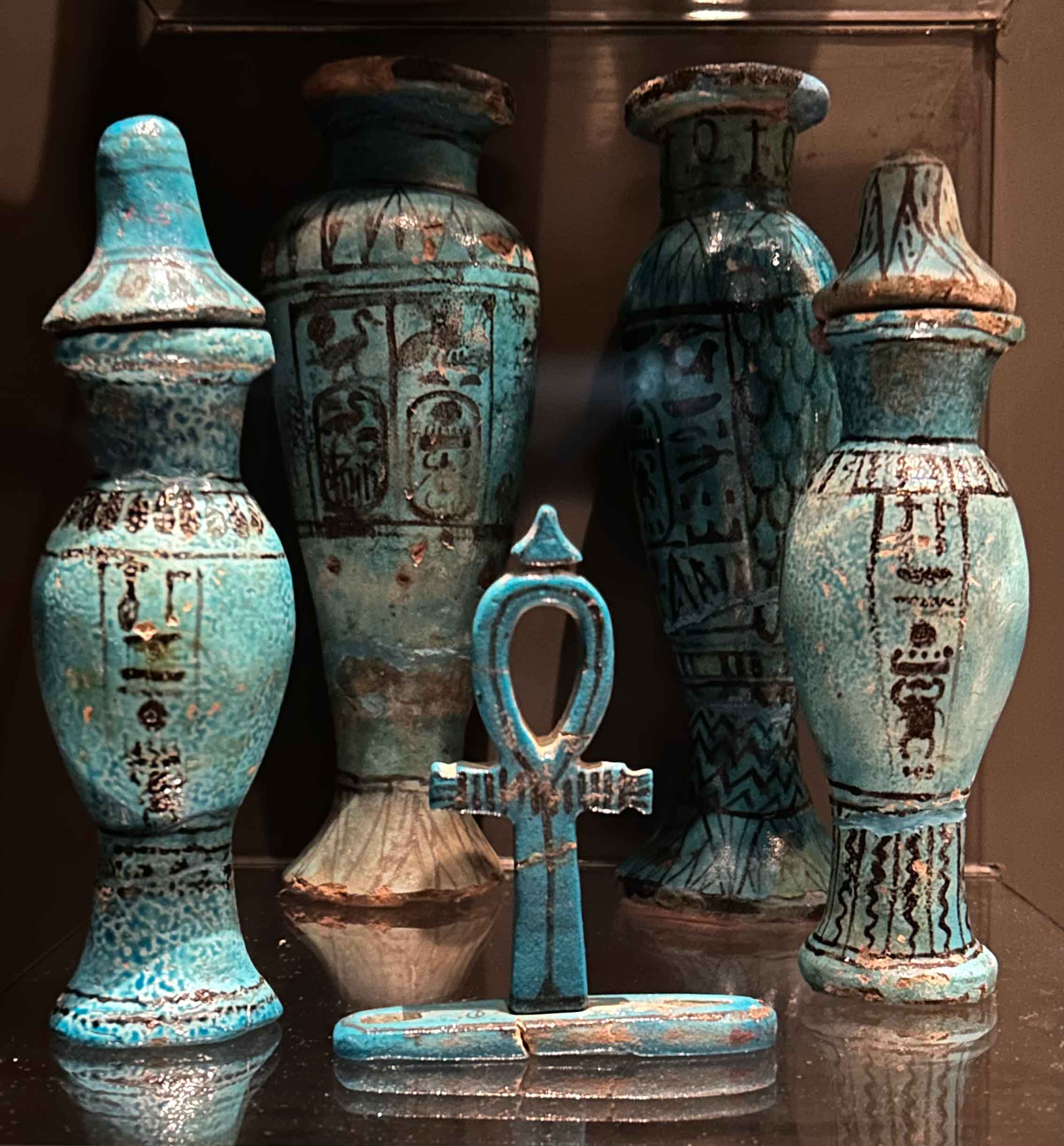The Royal Mummies Gallery displays the mummies of the ancient 17 Kings and 3 Queens of Egypt. The design aims to give the visitor the feeling of strolling down the Valley of The Kings, where most of these mummies were originally resting.

The Outer Coffin of Queen Ahmose Nefertari
This magnificent coffin once cradled Queen Ahmose Nefertari, the wife of Ahmose and the mother and co-ruler of Amenhotep I.


The Mummy of King Amenhotep
A truly extraordinary artifact, this mummy of King Amenhotep remains one of the very few intact, undisturbed mummies in existence. Observe the intricate flower arrangements adorning the mummy, with the mummy mask still in place, preserving the essence of this ruler.


The coffin of King Thutmose
Explore the splendid coffin of King Thutmose, adorned with traces of its golden decorations that once shone in all their glory. This coffin offers a glimpse into the opulence and grandeur of a bygone era.


The canopic chest of King Amenhotep II
This chest held the sacred Canopic jars containing the internal organs of King Amenhotep II. A fascinating glimpse into ancient Egyptian burial practices and beliefs.


Faience jars of King Tuthmoses IV
These exquisite faience jars formed part of the funeral equipment of King Tuthmoses IV.
